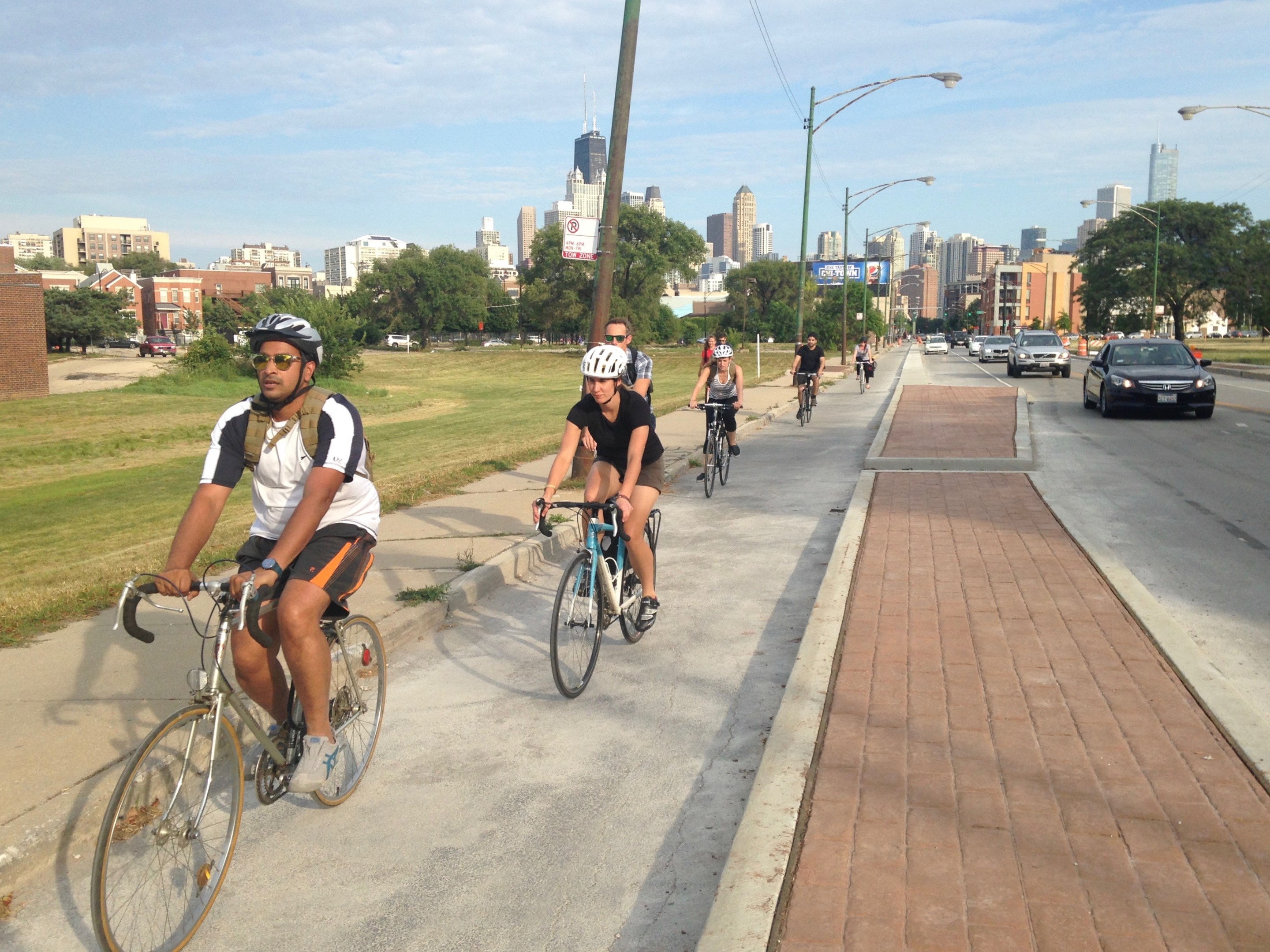I look forward to the day I and thousands of other Chicagoans can easily plan a trip by bike to anywhere in Chicago with confidence and ease. There won't be a sense of worry that you may have miscalculated your route and will therefore be vulnerable to being injured or killed due by a reckless, intoxicated, or distracted driver. Motorists can take it for granted that if they choose the most direct route to their destination, the streets have been designed to be convenient and comfortable to drive on as they move through the city protected by tons of steel and glass.
That sense of safety and comfort on the road should be shared by those who commute by bike. In case you weren't aware, the Earth's climate is currently undergoing a profound change that is a threat to all life on this planet. The amount of greenhouse gases released by increasingly popular SUVs is rising, which is totally counterproductive to combating climate change. Safe and comfortable physically protected bikeways are critical for reducing transportation emissions and traffic congestion. Painted lines that can be driven in or parked within are not enough to entice most people to ride a bike. We need bikeways that allow most people to feel safe and comfortable as they ride them. We need to build them all across the city so that all Chicagoans have equal access.
I recently remarked to a friend that I'm grateful I have the confidence to bike because it gives me more flexibility in how I get around. Yet I don't want our streets to require special confidence to be able to navigate them comfortably on two wheels. Our current biking conditions require a certain degree of bravery, which is a deal-breaker for many people who might otherwise be interested in trying urban cycling.
Studies show that women tend to prefer physically protected bikeways. Last summer I experienced a fair amount of harassment on my bike that left me shaken and angry. In particular, I believe my race (Black) and perceived gender (woman) made me a target for harassment. Currently Chicago has an Office of Equity & Racial Justice. I would love to see this focus on equity spread to the Chicago Department of Transportation. In addition to CDOT designing and distributing bikeways with racial equity as a goal, gender equity and accessibility for folks with disabilities should also be focused on. What would our streets look like if we considered the ways in which different groups navigate space and deserve equitable access to public space? What if our transportation planners were required to constantly consider the needs of women and folks with disabilities?
While Mayor Lori Lightfoot's transportation platform included a goal of building 100 miles of bikeways, including 50 miles of protected bikeways, she hasn't said much about cycling since she took office. One way she can immediately make a big difference is by severely limiting the influence aldermen have over bike projects in their ward. The day she was inaugurated, Lightfoot signed an executive order supposedly abolishing aldermanic prerogative, the power City Council members have to veto projects in their wards. However, as of November, CDOT hadn't changed its aldermanic approval protocols.
Currently bike lane coverage and design vary from ward to ward. Aldermen mainly oppose bike lanes that would lead to a reduction of the number of lanes for drivers, or the number of storage spaces for their large metal boxes, fearing a backlash at the polls. By taking these decisions out of the aldermen's sphere of influence, you level the playing field for people who bike.
Drivers are generally not sending emails or making phone calls trying to persuade city and state officials to build safe, convenient routes for them, because that's a given. Cyclists shouldn't have to convince decision-makers that their travel mode deserves the same consideration. Safe biking infrastructure should also be included on every major roadway, not the ones where it's easy to stripe a bike lane without taking any space away from cars. Currently it seems that bike lanes are designed to minimize driver inconvenience as opposed to increasing safety for people on bike and enticing as many people to cycle as possible. If the latter were the goal, our streets would look very different.
If Mayor Lightfoot is serious about reducing emissions, decreasing congestion, improving equity, and giving Chicagoans real transportation options, she'll make physically protected bikeways the default bike lane design, and built a consistent grid of them across the city, from Altgeld Gardens to Edison Park.





